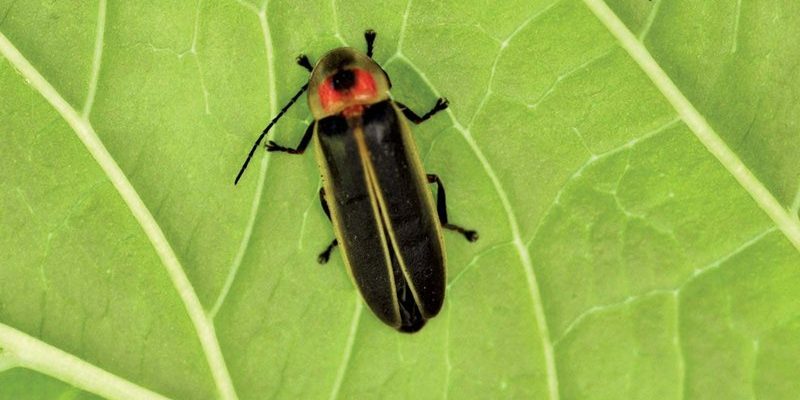
Fireflies, or lightning bugs as they’re sometimes called, are part of the beetle family. There are over 2,000 species of fireflies around the world. They’re known for their bioluminescence, a fancy term for the natural light they produce through a chemical reaction in their bodies. This light is primarily used to attract mates, but it raises a question: Should we be cautious around them? Let’s dive into what makes fireflies so special and whether they pose any risk to us.
What Are Fireflies and How Do They Glow?
Fireflies are fascinating little creatures. They typically measure about half an inch to an inch long, and their defining feature is that enchanting glow they emit. The light comes from a reaction between a substance called luciferin and an enzyme called luciferase. This reaction occurs in specialized cells in their abdomen. Think of it as nature’s own light bulb, perfectly designed to attract a mate or deter predators.
You might often see them in warm, humid conditions, especially at dusk. That’s when they come alive, lighting up gardens, fields, and backyards. Just imagine walking through a dark park, and suddenly, fireflies start twinkling around you. It feels almost like stepping into a dream!
Interestingly, fireflies aren’t born glowing. In their larval stage, they can be quite different. Firefly larvae are predatory and can actually glow as a warning to potential predators. This means they’re letting other creatures know, “Hey, I’m not tasty, so back off!” So, they’re crafty little insects both in their glow and in their survival tactics.
Are Fireflies Poisonous or Venomous?
This is a common question, and it’s great to clarify. Fireflies are neither poisonous nor venomous to humans. While some creatures have toxins that can harm us, fireflies use their glow as a warning signal in nature. They contain compounds that can deter predators, but these compounds are harmless to us.
It’s essential to understand the difference: poisonous creatures harm when eaten or touched, while venomous creatures inject toxins through bites or stings. Fireflies don’t fall into either category. So, when you catch one in your hand to marvel at its glow, you’re not in any danger.
However, it’s always best to practice gentle handling. Even though fireflies don’t bite and are safe, too much squeezing or extended holding can stress them out. Treat them like the delicate little creatures they are, and they’ll continue to light up our nights!
Are There Any Health Risks Associated with Fireflies?
Generally speaking, fireflies don’t pose any health risks to humans. They don’t bite, sting, or carry diseases that affect us. Still, it’s worth noting that some folks may have allergic reactions to insect bites or stings, but fireflies aren’t a concern in that department.
There’s also a bit of a misconception that handling any insect can lead to health problems. The truth is, most insects, including fireflies, play a significant role in our ecosystem. They’re part of the food chain, helping to pollinate plants and serve as food for birds and other wildlife.
If you or your child happen to catch a firefly and feel a bit of an itch or redness afterwards, it’s likely more about the creature’s environment than the firefly itself. Dirt or pollen on your hands could be the culprits. So, it’s always a good practice to wash your hands after any outdoor exploration, even with harmless insects.
Can Fireflies Harm Pets?
Now, if you have a furry friend at home, you might be worried about how fireflies affect them. Fortunately, fireflies are generally safe for pets, too. Cats and dogs might be curious about these glowing insects, but they usually don’t pose any significant threat.
However, there’s a catch. Fireflies contain a toxin called lucibufagins, which can be harmful if ingested in large quantities. This means that if your pet decides to munch on a bunch of fireflies, it could lead to some gastrointestinal distress—think vomiting or diarrhea. But don’t panic! A few fireflies here and there won’t harm them.
To keep your pets safe, it’s best to supervise them when they’re outside playing during firefly season. Make sure they don’t gobble up any glowing bugs, and they should be just fine.
How to Enjoy Fireflies Safely
If you’re looking to enjoy fireflies during their peak season, follow a few simple guidelines for a safe and delightful experience. Here are some tips to keep in mind:
- Observe from a distance: Enjoy their glow without catching them. This way, you also help maintain their population.
- Don’t use pesticides: Chemicals can harm fireflies and other beneficial insects in your garden.
- Use natural lighting: When you’re outside, turn off bright lights. This allows you to see the fireflies more clearly and encourages them to come out.
Firefly watching can be a magical experience, especially for kids. Instead of catching them, consider taking a moment to sit quietly and enjoy the spectacle of nature. You might even see them dancing in the air as if they are putting on a show just for you.
So, is the firefly dangerous to humans? The answer is a resounding no! These lovely little insects are harmless, and they add a touch of magic to our summer nights. With their enchanting glow and unique life cycle, they truly captivate us.
Fireflies are a beautiful reminder of nature’s wonders. As you enjoy those warm evenings outdoors, take a moment to appreciate their beauty, and remember that they’re not just bugs. They’re vital parts of our ecosystem, quietly lighting up our world while keeping their distance from us. So go ahead, relax, and let those fireflies illuminate your night—no worries needed!

